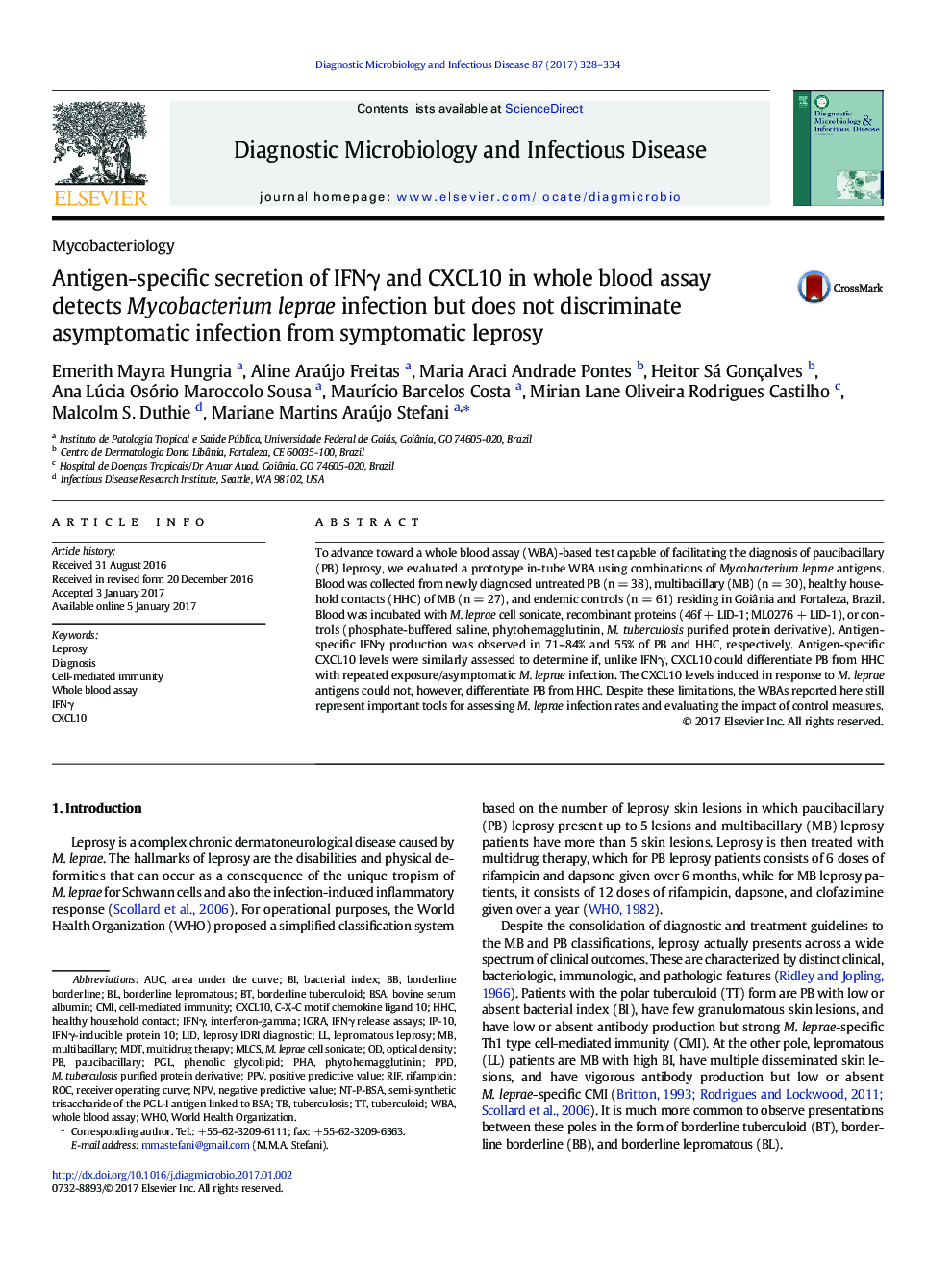| Article ID | Journal | Published Year | Pages | File Type |
|---|---|---|---|---|
| 5665827 | Diagnostic Microbiology and Infectious Disease | 2017 | 7 Pages |
â¢IFNγ, CXCL10 from WBA-M. leprae antigen combinations can identify M. leprae infection.â¢IFNγ, CXCL10 from WBA-M. leprae antigen combinations did not distinguish PB from HHC.â¢Combining IFNγ and CXCL10 increased WBA sensitivity, however, decreasing specificity.â¢WBA can help assess M. leprae infection rates and evaluate control measures impact.
To advance toward a whole blood assay (WBA)-based test capable of facilitating the diagnosis of paucibacillary (PB) leprosy, we evaluated a prototype in-tube WBA using combinations of Mycobacterium leprae antigens. Blood was collected from newly diagnosed untreated PB (n = 38), multibacillary (MB) (n = 30), healthy household contacts (HHC) of MB (n = 27), and endemic controls (n = 61) residing in Goiânia and Fortaleza, Brazil. Blood was incubated with M. leprae cell sonicate, recombinant proteins (46f + LID-1; ML0276 + LID-1), or controls (phosphate-buffered saline, phytohemagglutinin, M. tuberculosis purified protein derivative). Antigen-specific IFNγ production was observed in 71-84% and 55% of PB and HHC, respectively. Antigen-specific CXCL10 levels were similarly assessed to determine if, unlike IFNγ, CXCL10 could differentiate PB from HHC with repeated exposure/asymptomatic M. leprae infection. The CXCL10 levels induced in response to M. leprae antigens could not, however, differentiate PB from HHC. Despite these limitations, the WBAs reported here still represent important tools for assessing M. leprae infection rates and evaluating the impact of control measures.
